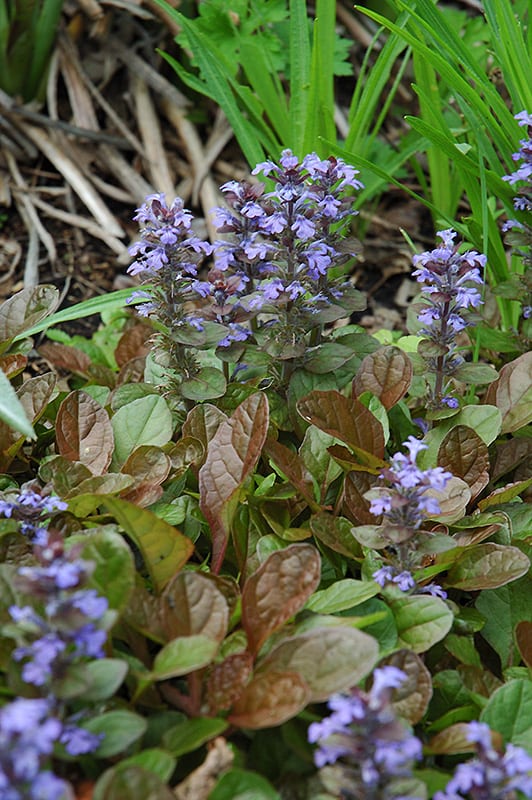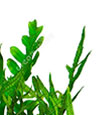Caitlin’s Giant Bugleweed
Please contact your local store for product availability.
Find a garden center near you.
Species: reptans
Other Species Names: Carpet Bugle
Plant Height: 8 in.
Spread: 24 in.
Evergreen: Yes
Plant Form: spreading
Emergent Foliage Color: dark brown
Summer Foliage Color: forest green
Minimum Sunlight: shade
Maximum Sunlight: partial shade
Caitlin's Giant Bugleweed's attractive crinkled round leaves emerge dark brown in spring, turning forest green in color with prominent deep purple tips the rest of the year. It features subtle spikes of sky blue flowers rising above the foliage from mid to late spring. The fruit is not ornamentally significant.
Caitlin's Giant Bugleweed is a dense herbaceous evergreen perennial with a ground-hugging habit of growth. Its medium texture blends into the garden, but can always be balanced by a couple of finer or coarser plants for an effective composition. This plant will require occasional maintenance and upkeep, and should not require much pruning, except when necessary, such as to remove dieback. It is a good choice for attracting butterflies to your yard, but is not particularly attractive to deer who tend to leave it alone in favor of tastier treats. Gardeners should be aware of the following characteristic(s) that may warrant special consideration; Spreading Caitlin's Giant Bugleweed is recommended for the following landscape applications; Rock/Alpine Gardens Border Edging General Garden Use Groundcover Naturalizing And Woodland Gardens
Caitlin's Giant Bugleweed will grow to be about 8 inches tall at maturity extending to 12 inches tall with the flowers, with a spread of 24 inches. Its foliage tends to remain low and dense right to the ground. It grows at a medium rate, and under ideal conditions can be expected to live for approximately 10 years. This plant does best in partial shade to shade. It does best in average to evenly moist conditions, but will not tolerate standing water. It is not particular as to soil type or pH. It is somewhat tolerant of urban pollution. Consider covering it with a thick layer of mulch in winter to protect it in exposed locations or colder microclimates. This is a selected variety of a species not originally from North America. It can be propagated by division; however, as a cultivated variety, be aware that it may be subject to certain restrictions or prohibitions on propagation.



